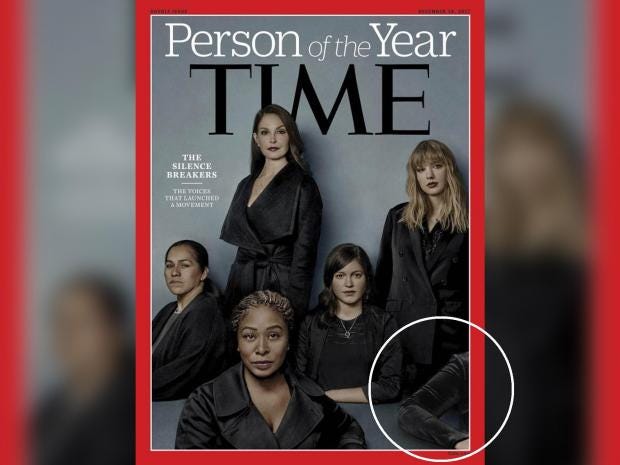(Video: Bastien Inzaurralde/Post; photo: Getty Images)
Next Update: 0:27
Next Update: 0:27
In a surprising flip of a solidly Republican state, Doug Jones became the first Democrat elected to the Senate from Alabama since 1992 in a victory that showed the increasing power of sexual misconduct allegations and the limits of President Trump’s political influence. Roy Moore told his supporters “it’s not over” and suggested that the race might go to a recount, but the Alabama Republican Party said it would not support his push for one.
- The race captivated the nation, not only for its debates over party loyalty and morality, but also for its immense implications for both parties and the Trump presidency.
Democrats are jubilant — and newly confident about 2018 — as they win on Trump’s turf
After more than a year of partywide bickering in the wake of Hillary Clinton’s defeat, Democrats found solace in a stunning feat — beating a Trump-style Republican in one of the most ruby-red states in the nation.
The Democrat’s surprising victory gives Senate Republicans an even thinner margin entering the second year of Trump’s presidency.
This race seemed to bring together much of what is in the forefront of the political debates, from the influence of the president to the fractured Republican Party to the issue of sexual harassment. For Republicans, it was a bad night, no matter how it was measured. The question is where do they go now.
The White House disputed the characterization of the president’s tweet as sexually demeaning. But Democratic calls increased for congressional investigations or Trump’s resignation.
After what seems like years, the Alabama special election is over. The race to replace Attorney General Jeff Sessions in the Senate featured votes spanning nearly four full months, with one bizarre turn after another, and ended Tuesday night with Democrat Doug Jones pulling off the upset over Republican Roy Moore, who faced allegations that he had sexually harassed and assaulted teenage girls while he was in his 30s.
 |
| Leigh Corfman, left, in a photo from 1979, when she was about 14. At right, from top, Wendy Miller around age 16, Debbie Wesson Gibson around age 17 and Gloria Thacker Deason around age 18. (Family photos) |
--------------------------------------------------
Let's break down the whole thing via winners and losers.
WINNERS
Democrats’ Senate majority hopes
At the start of the cycle, the math for Democrats winning the Senate majority in 2018 — even in a very good environment — appeared prohibitive. They had only two bona fide pickup opportunities, they needed three pickups, and they had to defend 10 swing and red states that President Trump won. The map was just brutal.
But since then, they’ve gotten the news they need to at least put the Senate in play. Potential takeovers in Arizona and Nevada look increasingly promising. An open seat has popped up in Tennessee, where last week Democrats landed popular former governor Phil Bredesen as a candidate, and now they've nabbed one of the three pickups they needed a year early in Alabama. The math is still tough, but it’s clearly within the realm of possibility now. And with Democrats claiming a double-digit lead on the generic ballot, things are very much looking up.
A Suburban Shellacking
Voters in Alabama’s cities and most affluent suburbs overwhelmingly rejected Mr. Moore’s candidacy, an ominous sign for Republicans on the ballot next year in upscale districts. In Jefferson County, which includes Birmingham and some of the state’s wealthiest enclaves, Mr. Jones, the Democratic candidate, captured more than 68 percent of the vote. And in Madison County, home to Huntsville and a large NASA facility, Mr. Jones won 57 percent of the vote.
While these Alabamians, many of them women, may have been appalled by the claims of sexual misconduct against Mr. Moore, results like these were not isolated to this race. They mirrored returns in last month’s statewide and legislative races in Virginia, a state filled with well-heeled suburbanites.
The #MeToo movement
----
Jones’s win has to be a shot in the arm for the #MeToo movement. A year after sexual harassment accusations failed to bring down Trump, they were able to stop a Republican in a dark-red state. Moore certainly had other problems, but this has to embolden other women who might be considering sharing their stories. At the very least, it shows they can have a real impact.
African American turnout
Perhaps the biggest story line heading into Election Day was whether enough black voters would turn out to vote for Jones. Given how racially polarized Alabama is, Jones could only count on so many votes from white Alabamians, who usually go about 4 to 1 or more for the GOP....Well, black voters turned out — in about the same numbers they did for Obama in 2008 and 2012, in fact. ... The big question is whether this was because conservative-leaning white voters were turned off by the allegations against Moore and stayed home, or because efforts to turn out black voters were just that successful. Even if it was a mix, though, black voters gave Jones the shot he needed.
 |
| Roy Moore, who has staunchly denied claims of sexual misconduct, has long been a popular figure in Alabama, and a divisive one. Brynn Anderson/Associated Press |
| Roy Moore's spokesman Ted Crockett (right) went on CNN Tuesday night and told Jake Tapper (left) that the candidate 'probably' thought homosexual conduct was a crime Read more: http://www.dailymail.co.uk/news/article-5172839/Alabama-Senate-race-close-call.html#ixzz518Q3cqDc Follow us: @MailOnline on Twitter | DailyMail on Facebook |
LOSERS
Trump
Trump stuck his neck out by backing Moore even when other members of the GOP establishment wouldn’t, apparently believing that Moore had regained momentum.
 |
Bannon and Moore during a campaign rally, Dec. 5.
Photographer: Nicole Craine/Bloomberg
|
Stephen Bannon
The former Trump adviser backed Moore even when Trump was behind Strange, and he carefully guided Moore through the accusations. As Bannon biographer Joshua Green wrote for Bloomberg News, Bannon was instrumental in avoiding a conservative-media backlash against Moore, which might have been fatal.
In the end, though, Bannon was just prolonging the inevitable. And for a man who fashions himself a kingmaker for insurgent GOP candidates, having your chosen candidate lose in Alabama is pretty darn bad. Establishment Republicans were only too happy Tuesday night to blame Bannon for the loss of a really important Senate seat.
But Mr. Moore’s allies placed the blame for the loss on Mr. McConnell, who withdrew his support after the allegations first emerged that Mr. Moore had pursued teenage girls sexually or romantically.
“They colluded with the Democrats to undermine a pro-Trump candidate like Judge Moore just like they are going to try to do that in 2018 to myself and other pro-Trump candidates,” said Corey Stewart, who is challenging Senator Tim Kaine of Virginia... Mr. Moore’s loss will only exacerbate tensions between Senate leaders and the party’s grass-roots and will probably play out in a series of House and Senate primaries in 2018. And if Republicans continue to nominate candidates who are too controversial to win general elections, the party’s internal divisions may cost them control of Congress.
Senate Republicans
As The Post’s Paul Kane astutely pointed out Tuesday morning, either result in the election would be difficult to call a victory for Senate Republicans. Losing the seat would mean their majority was narrowed by half and more imperiled come 2018, but winning it would mean they had to deal with Moore. And even before the sexual allegations, that was something Senate Republicans really preferred not to do, given Moore's uniquely extreme politics and penchant for fashioning himself a martyr. Layer on top of that the fact that Republicans said they'd call for an ethics investigation and even, in some cases, Moore's expulsion, and having Moore in the Senate might have been a bigger headache than adding a Democrat.
[But] next year, they may have an even tougher time passing party-line legislation. And maverick members of their fragile majority — like Senators Susan Collins of Maine and Bob Corker of Tennessee — could have a far stronger hand in the chamber.
 |
| Mr. Jones in 2002, when he was the United States attorney in the 16th Street Baptist Church bombing case.Dave Martin/Associated Press |
Doug Jones: A Lawyer in the Thick of Alabama’s Big Moment.
Before the special election on Tuesday, the largest of Mr. Jones’s historical moments, and perhaps still the most consequential, were the successful prosecutions of two of the Klansmen involved in the bombing of the 16th Street Baptist Church in Birmingham, nearly 40 years after the crime. Mr. Jones served as lead prosecutor.







